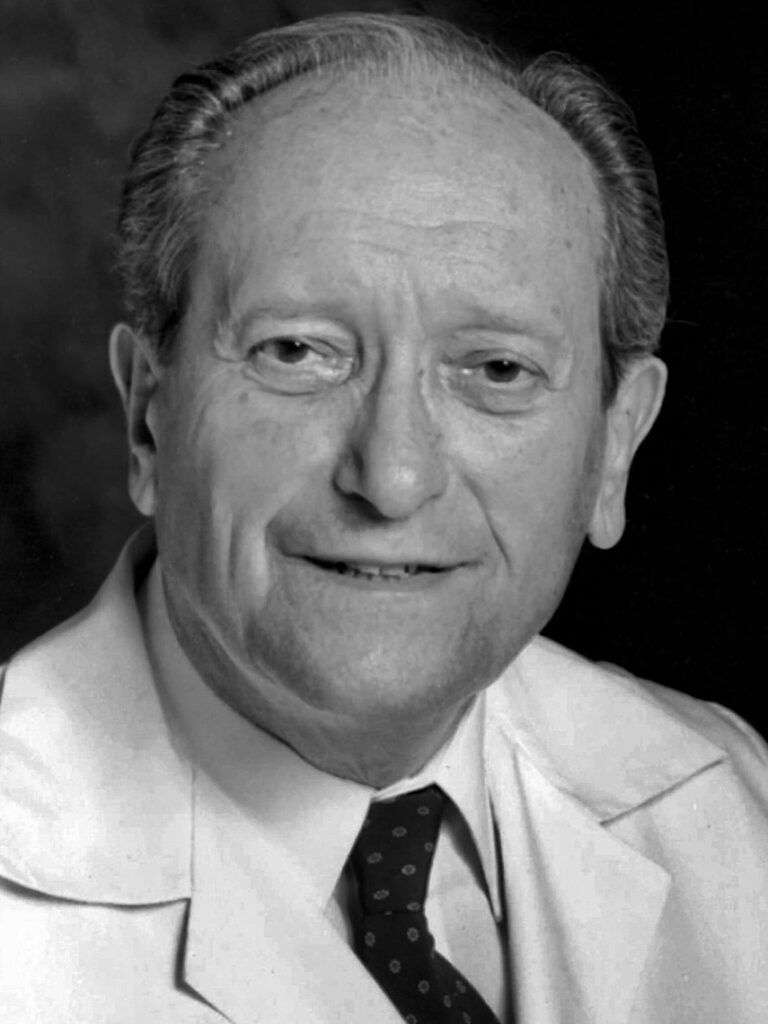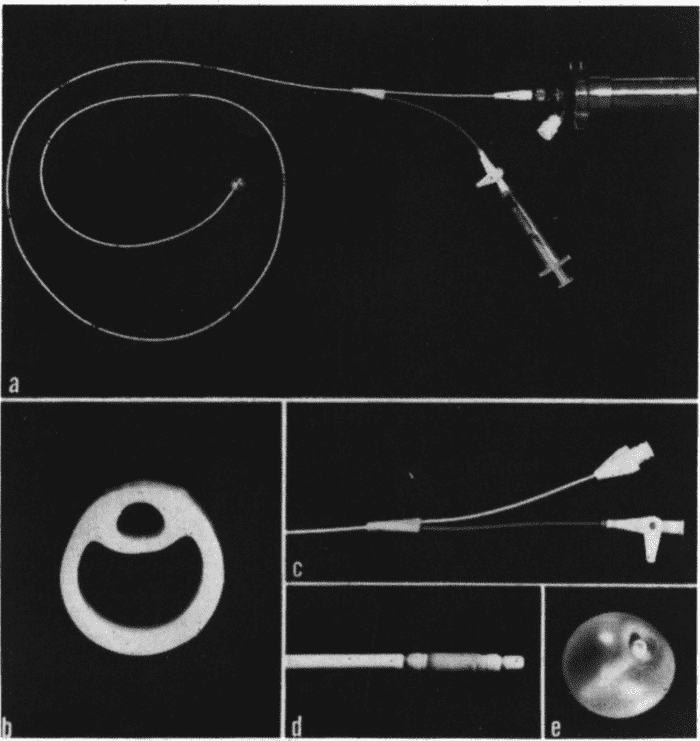William Ganz

Vilem (William) Ganz (1919-2009) was a Slovakian-born American cardiologist.
Ganz was a Slovakian-born cardiologist whose personal and professional journey epitomized perseverance, innovation, and legacy. Best known as co-inventor of the Swan-Ganz catheter—a device that revolutionized hemodynamic monitoring—Ganz’s life spanned geopolitical upheaval, war, and transformative advances in cardiovascular medicine.
Born in Košice, Czechoslovakia, in 1919, Ganz began his medical studies at Charles University in Prague in 1937. His education was interrupted by the 1938 Munich Agreement and subsequent forced conscription into a Hungarian labor camp due to his Jewish heritage. Escaping Nazi deportation in 1944, he fled to Budapest under false identity documents, where he met his future wife Magda. The couple survived the war, married in 1945, and returned to Prague where Ganz completed his medical studies in 1947.
A brilliant clinical investigator, Ganz worked at the Institute for Circulatory Disorders in Prague alongside Arnost Fronek. Together they pioneered the thermodilution technique for measuring blood flow, laying the technical foundation for his later innovations. In 1966, amid growing disillusionment with the communist regime, he emigrated with his family to the United States.
In Los Angeles, he joined Cedars-Sinai Medical Center, where his collaboration with Jeremy Swan led to the invention of the Swan-Ganz catheter in 1970. This flow-directed, balloon-tipped catheter enabled bedside pulmonary artery catheterisation and advanced the understanding of cardiogenic shock, pulmonary oedema, and critical care monitoring. Ganz also contributed to coronary flow assessment and the early development of thrombolysis for acute myocardial infarction.
Despite international acclaim, William Ganz remained modest and deeply committed to his family and students. He passed away in Los Angeles in 2009, four years after the death of his beloved wife Magda, leaving a legacy carried forward by his sons Peter and Tomas—both leading physicians in their own right.
Biography
- 1919 – Born January 7 in Košice, Czechoslovakia.
- 1937 – Enrolled in medical school at Charles University, Prague.
- 1938 – Studies interrupted after Košice became part of Hungary; conscripted into Jewish forced-labor camp.
- 1944 – Escaped deportation to Auschwitz; fled to Budapest using false papers; met Magda Weisz.
- 1945 – Married Magda in Budapest.
- 1947 – Graduated top of his class from Charles University, Prague.
- 1950s–1966 – Clinician-researcher at Institute for Circulatory Disorders, Prague. Collaborated with Arnost Fronek on thermodilution.
- 1966 – Emigrated to Los Angeles, USA.
- 1967–1969 – Joined Cedars-Sinai Medical Center; began collaboration with Dr. Jeremy Swan.
- 1970 – Co-developed the Swan-Ganz catheter; published foundational paper: “Catheterization of the heart in man with use of a flow-directed balloon-tipped catheter“
- 1970s–1980s – Expanded catheter design; contributed to hemodynamic understanding of circulatory shock and pulmonary edema.
- 1982 – Pioneered coronary thrombolysis for acute myocardial infarction.
- 2005 – Death of his wife, Magda.
- 2009 – Died November 11 in Los Angeles, aged 90.
Medical Eponyms
Swan-Ganz catheter – pulmonary artery catheter (1970)
A balloon-tipped, flow-directed pulmonary artery catheter co-invented in 1970 by William Ganz and Jeremy Swan at Cedars-Sinai Medical Center. The catheter enabled safe bedside measurement of pulmonary artery pressures, pulmonary capillary wedge pressure, and cardiac output.
Originally inserted via antecubital or central venous access, the catheter “floats” through the right heart chambers into the pulmonary artery with the aid of the balloon. Provided critical insight into the haemodynamic profiles of circulatory shock, particularly in distinguishing cardiogenic vs non-cardiogenic pulmonary oedema.
Widely adopted in intensive care and cardiology, though its routine use has declined in favour of less invasive modalities.
Developed in collaboration with Edwards Laboratories.
Pictured below is the “extruded polyvinyl-chloride catheter 1.7mm in outer diameter” with the balloon tipped catheter and “attached to a strain-gauge catheter.” The pulmonary artery was accessed via “antecubital-vein cutdown” during the inception

Key Medical Contributions
- Thermodilution technique – Co-developed with Arnost Fronek for measuring blood flow. Charles University, Prague
- Swan-Ganz catheter – Co-invented with Jeremy Swan in 1970; transformed critical care and cardiac diagnostics.
- Intracoronary thrombolysis – Pioneer of early reperfusion therapy for myocardial infarction.
- Coronary sinus thermodilution – Developed methods to assess human coronary circulation.
Major Publications
- Swan HJ, Ganz W, Forrester J, Marcus H, Diamond G, Chonette D. Catheterization of the heart in man with use of a flow-directed balloon-tipped catheter. N Engl J Med. 1970 Aug 27;283(9); 447-51.
- Ganz V, Hlavova A, Fronek A, Linhart J, Prerovsky I. Measurement of blood flow in the femoral artery in man at rest and during exercise by local thermo-dilution. Circulation. 1964; 30; 86-9.
- Chatterjee K. The Swan-Ganz catheters: past, present, and future. A viewpoint. Circulation. 2009; 119; 147-52.
- Ganz W, Tamura K, Marcus HS, Donoso R, Yoshida S, Swan HJ. Measurement of coronary sinus blood flow by continuous thermo-dilution in man. Circulation. 1971; 44; 181-95.
- Ganz W, Buchbinder N, Marcus H, Mondkar A, Maddahi J, Charuzi Y, et al. Intracoronary thrombolysis in evolving myocardial infarction. Am Heart J. 1981; 101; 4-13.
Controversies
Ganz claimed that the “sail-boat” idea was apocryphal and that the use of the balloon was driven by both the need to float the catheter and, most important, to cover the sharp tip of the catheter to reduce the mechanical irritation to the endocardium that caused arrhythmia during passage.
References
Biography
- Bateman BT, Alston TA. Commonly used eponyms in anesthesia. J Clin Anesth. 2009 Feb; 21(1); 67-71
- Willerson JT. In Memoriam: William Ganz 1919–2009. Tex Heart Inst J. 2010;37(1):4–5.
- Stern S. William Ganz: from refugee to world fame. Cardiol J. 2010;17(6):650-1.
- Berry D. William (Vilem) Ganz, 1919-2009, cardiologist and co-inventor of the Swan-Ganz catheter which revolutionized cardiovascular investigations. Eur Heart J. 2011 Mar;32(6):660-1.
- Maltby R. Notable Names in Anaesthesia. The Choir Press; 2013: 209-213
- Ganz T, Ganz P. William Ganz and His Legacy. Ann Intern Med. 2019 May 21;170(10):734-735.
Eponymous terms
- Chatterjee K. The Swan-Ganz catheters: past, present, and future. A viewpoint. Circulation. 2009 Jan 6;119(1):147-52.
- Thakkar AB, Desai SP. Swan, Ganz, and Their Catheter: Its Evolution Over the Past Half Century. Ann Intern Med. 2018 Nov 6;169(9):636-642
- Headley JM. Fiftieth Anniversary of the Swan-Ganz Catheter: From Then Until Now. AACN Adv Crit Care. 2020 Mar 15;31(1):23-24.
- Nickson C. History of the Pulmonary Artery Catheter. LITFL
Eponym
the person behind the name
Resident Medical Officer currently working in Emergency Department at Sir Charles Gairdner Hospital. Pianist and avid Golfer | LinkedIn |
